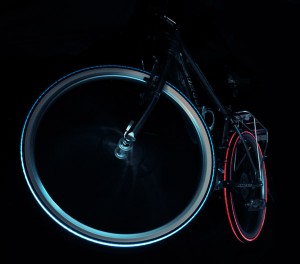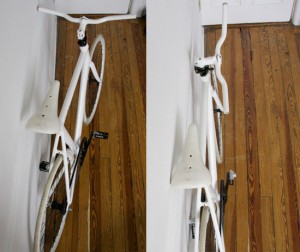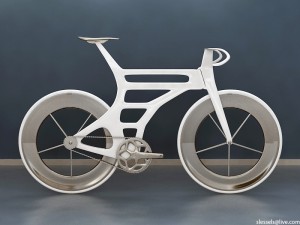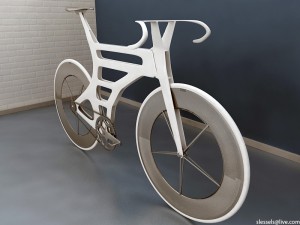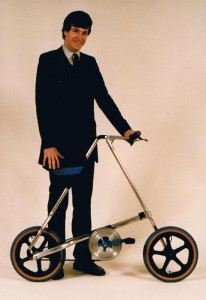 I have mentioned Mark Sanders and hisStrida folding bike on the blog quite a few times in the past (if you haven’t already read the excellent guest post that he wrote a few years ago, check it out before you continue reading this one). Though he has designed quite a few interesting folding bikes over the years, the Strida is the still bike that Mark is best known for. You may not be aware though that he designed and engineered the bike that would later become the Strida while he was an Industrial Design Engineering graduate student at the Imperial College London/ Royal College of Art. Just a few days ago, Mark scanned and shared his original 1985 Masters Thesis from that project on his Issuu page.
I have mentioned Mark Sanders and hisStrida folding bike on the blog quite a few times in the past (if you haven’t already read the excellent guest post that he wrote a few years ago, check it out before you continue reading this one). Though he has designed quite a few interesting folding bikes over the years, the Strida is the still bike that Mark is best known for. You may not be aware though that he designed and engineered the bike that would later become the Strida while he was an Industrial Design Engineering graduate student at the Imperial College London/ Royal College of Art. Just a few days ago, Mark scanned and shared his original 1985 Masters Thesis from that project on his Issuu page.
The research section of Mark’s thesis covers a few of the other Folding bike concepts that were on the market at the time. From there, his thesis moves on to the concept design section, where you can see a couple of his early development models. The section on ergonomics is also of particular interest as it compares a typical racing position to a completely upright riding position for city bikes, an idea that Mark points out has “almost become (his) manifesto” today. The market research survey, manual engineering calculations, and prototype detail sectionsare all very interesting as well. I highly recommend that you read through the entire 75-page thesis.
 In addition to his Thesis, Mark also scanned and uploaded his original Business Plan for the Strida. In that document, you can see the first prototype, which Mark completed within 6 months of the college project. He points out that the design of that first production prototype is “still about 70% of the current Strida.”
In addition to his Thesis, Mark also scanned and uploaded his original Business Plan for the Strida. In that document, you can see the first prototype, which Mark completed within 6 months of the college project. He points out that the design of that first production prototype is “still about 70% of the current Strida.”
It is interesting to see some of thepublicity that the first Strida prototype received. Now, 25 years later, the latest version of the Strida is still often mentioned on design sites, so Mark must have done something right with that original design.

